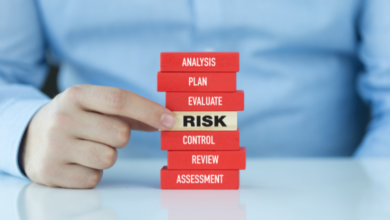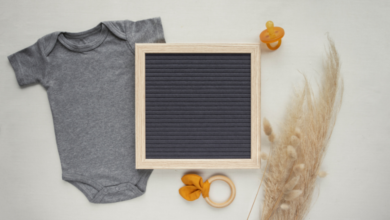The Best Ways To Speed Up Postpartum Recovery
Introduction
The postpartum period, often referred to as the “fourth trimester,” is a critical time for a new mother’s recovery and adjustment to life with a newborn. While the joy of welcoming a new baby is unparalleled, the physical and emotional demands of childbirth can be overwhelming. Postpartum recovery is a process that requires patience, care, and support. However, there are several ways to accelerate this recovery, helping new mothers regain their strength and well-being more quickly. This article explores the best strategies for speeding up postpartum recovery, ensuring that mothers can focus on bonding with their baby and enjoying their new role.
Understanding Postpartum Recovery
Postpartum recovery refers to the period after childbirth during which a mother’s body heals and adjusts to the physical changes brought about by pregnancy and delivery. This recovery involves a wide range of processes, including the healing of the uterus, recovery from any perineal or abdominal trauma (such as tears or a C-section), and the gradual return of the body to its pre-pregnancy state.
While every woman’s recovery timeline is different, the first six weeks postpartum are often the most challenging. This period is marked by a range of symptoms, including vaginal bleeding (lochia), uterine cramping, perineal pain, and fatigue. Additionally, emotional changes, such as mood swings and anxiety, are common as hormone levels fluctuate.
- Prioritize Rest and Sleep
One of the most critical factors in postpartum recovery is getting enough rest and sleep. However, this can be particularly challenging with a newborn who needs frequent feeding and care. Despite the difficulty, rest is essential for healing, as it allows the body to repair tissues, recover energy, and stabilize hormone levels.
Tips for Prioritizing Rest:
- Sleep When the Baby Sleeps: While it may be tempting to use your baby’s naptime to catch up on chores, it’s more important to rest. Even short naps can help reduce fatigue.
- Create a Support System: Enlist the help of your partner, family, or friends to take care of household tasks and the baby so you can rest.
- Limit Visitors: While it’s natural for friends and family to want to visit the new baby, too many visitors can be overwhelming. Don’t hesitate to set boundaries and prioritize your rest.
- Maintain a Healthy Diet
A well-balanced diet is crucial for postpartum recovery. The body needs additional nutrients to heal and to support breastfeeding. Eating a variety of nutrient-dense foods can help speed up recovery by providing the energy and building blocks necessary for tissue repair and immune function.
Key Nutrients for Postpartum Recovery:
- Protein: Essential for tissue repair, protein can be found in lean meats, eggs, dairy, beans, and nuts.
- Iron: Replenishing iron stores lost during childbirth is crucial. Incorporate iron-rich foods like red meat, spinach, and fortified cereals.
- Calcium: Important for bone health, calcium can be obtained from dairy products, leafy greens, and fortified plant-based milks.
- Omega-3 Fatty Acids: These support brain health and mood regulation. Include sources like fatty fish (e.g., salmon), walnuts, and flaxseeds.
- Hydration: Staying hydrated is vital, especially for breastfeeding mothers. Aim to drink plenty of water throughout the day.
- Gentle Exercise
Exercise may be the last thing on your mind after giving birth, but gentle movement can significantly benefit postpartum recovery. Exercise helps improve circulation, reduces the risk of blood clots, and can elevate mood by releasing endorphins. However, it’s important to start slowly and follow your healthcare provider’s advice on when to resume physical activity.
Recommended Postpartum Exercises:
- Pelvic Floor Exercises (Kegels): Strengthening the pelvic floor muscles can help with bladder control and promote healing of the perineal area.
- Walking: A simple walk can increase circulation and boost energy levels. Start with short, easy walks and gradually increase the distance as you feel stronger.
- Postnatal Yoga: Yoga can help stretch and strengthen muscles while promoting relaxation and mental well-being.
- Manage Pain and Discomfort
Postpartum pain and discomfort are common, whether from vaginal delivery or a C-section. Managing this pain effectively is essential for recovery, as it allows you to move more freely and take care of your baby.
Ways to Manage Postpartum Pain:
- Perineal Care: If you had a vaginal delivery, taking care of your perineum is crucial. Use a perineal bottle to rinse the area with warm water after using the toilet, and apply ice packs to reduce swelling.
- Pain Relievers: Over-the-counter pain relievers, such as ibuprofen or acetaminophen, can help alleviate pain. Always consult with your healthcare provider before taking any medication.
- Supportive Garments: Wearing a postpartum support belt or high-waisted underwear can provide additional support for your abdomen, especially after a C-section.
- Prioritize Mental Health
The emotional aspect of postpartum recovery is just as important as the physical. The postpartum period can be an emotional rollercoaster due to hormonal fluctuations, sleep deprivation, and the overwhelming responsibilities of caring for a newborn. It’s essential to prioritize mental health and seek help if needed.
Supporting Your Mental Health:
- Talk About Your Feelings: Share your thoughts and emotions with your partner, friends, or a counselor. Talking about your experiences can help you process them and feel less isolated.
- Practice Mindfulness: Mindfulness techniques, such as deep breathing exercises, meditation, or journaling, can help reduce stress and promote emotional balance.
- Watch for Signs of Postpartum Depression: While it’s normal to feel emotional after giving birth, if you experience prolonged sadness, anxiety, or a sense of hopelessness, it’s important to seek professional help. Postpartum depression is a serious condition that requires treatment.
- Bond with Your Baby
Bonding with your baby is not only essential for your child’s development but also plays a significant role in your emotional recovery. Skin-to-skin contact, breastfeeding, and simply spending time holding and talking to your baby can strengthen the mother-child bond and promote feelings of well-being.
Tips for Bonding:
- Skin-to-Skin Contact: Holding your baby against your skin helps regulate their temperature and heart rate while promoting a sense of closeness.
- Breastfeeding: If you choose to breastfeed, it’s a natural way to bond with your baby. The release of oxytocin during breastfeeding can also help improve your mood.
- Engage in Gentle Play: Interacting with your baby through singing, talking, or gentle play stimulates their senses and fosters emotional connection.
- Set Realistic Expectations
Many new mothers feel pressure to “bounce back” quickly after childbirth, but it’s essential to set realistic expectations for your recovery. Every woman’s body heals at its own pace, and comparing yourself to others can lead to unnecessary stress.
Tips for Managing Expectations:
- Be Patient: Understand that recovery takes time, and it’s okay to have good days and bad days. Celebrate small victories and progress, no matter how minor they seem.
- Avoid Social Media Comparisons: Social media often presents an unrealistic portrayal of postpartum recovery. Focus on your journey and avoid comparing yourself to others.
- Accept Help: Don’t hesitate to ask for or accept help from family and friends. Whether it’s with household chores, cooking, or caring for the baby, support from others can make a significant difference in your recovery.
- Regular Check-Ups
Regular postpartum check-ups with your healthcare provider are essential for monitoring your recovery and addressing any concerns. These appointments provide an opportunity to discuss physical symptoms, emotional well-being, and any challenges you may be facing.
What to Expect at Postpartum Check-Ups:
- Physical Examination: Your healthcare provider will check the healing of your uterus, perineum, or C-section incision, and ensure that your body is returning to its pre-pregnancy state.
- Discussion of Symptoms: Don’t hesitate to bring up any symptoms you’re experiencing, such as pain, bleeding, or emotional distress. Your provider can offer guidance and support.
- Family Planning: If you’re considering contraception, this is an excellent time to discuss options with your healthcare provider.
Conclusion
Postpartum recovery is a complex process that involves physical, emotional, and mental healing. While the journey can be challenging, following these strategies can help speed up recovery and make the transition to motherhood smoother. Prioritizing rest, maintaining a healthy diet, engaging in gentle exercise, managing pain, and seeking support for mental health are all critical components of a successful postpartum recovery.
Remember that every mother’s recovery journey is unique. It’s essential to listen to your body, set realistic expectations, and seek help when needed. By taking care of yourself, you’ll be better equipped to care for your newborn and enjoy the precious moments of early motherhood.




